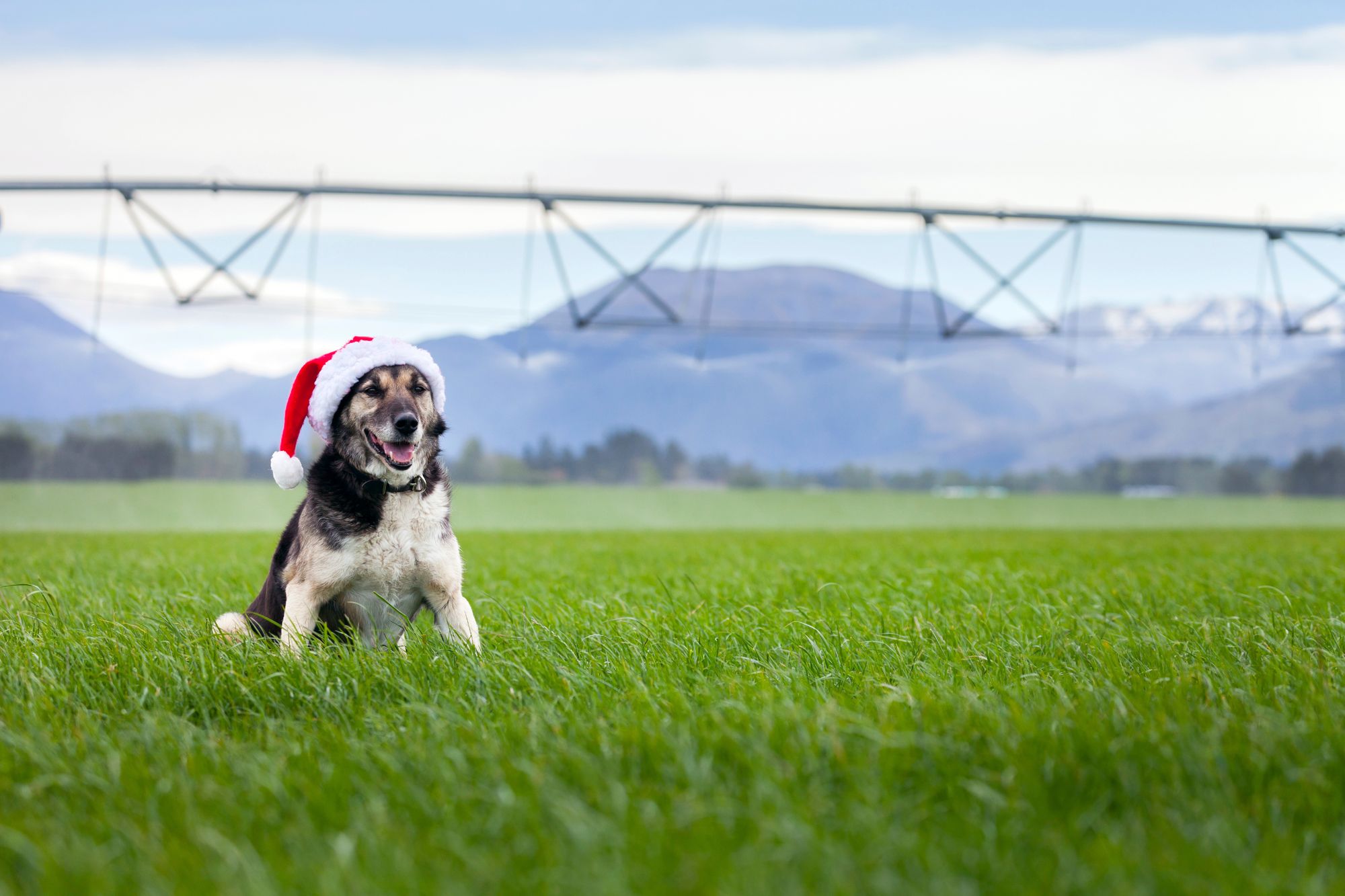End of Year Considerations - Fine Tuning our Focus

** Important message regarding Nutri-Life Platform® at end of this article - scroll to bottom for more info.
This year has flashed past so quickly, many are left gasping in the slipstream. The new challenges have been many, but we have also seen “more of the same” on multiple levels.
We have witnessed a worsening of Southern Hemisphere droughts, heatwaves, ravaging fires and desperation amongst food producers. In the other half of the world, we have widespread disruption of both planting and harvesting, with too much water at the wrong time. Welcome to the brave new world of climate change farming!
Three key considerations have surfaced amidst the mayhem, and this trio includes resilience, adaptability and infiltration.
Let’s look at how improving our understanding of these factors might impact our coming year.
Bring Back The Bounce-Back
“Resilience” refers to our “bounce-back” capacity, and it applies to soils, crops, livestock, our farming enterprises and ourselves.
The widespread embrace of a regenerative rather than sustainable approach relates to a growing desire to replenish and improve. We are now seeking to do more than simply sustain. Preserving what we have will not provide the resilience we require to face fresh challenges. In many cases, we will need to reclaim what we have lost; while improving our base. This regenerative strategy will boost our resistance to extremes.

Economic resilience relates to the ability of your enterprise to withstand constant challenges. You cannot be so highly leveraged that a single crop failure threatens your financial existence. Now, more than ever, is the time to squirrel the rewards of a good season to withstand the unavoidable flipside. The economic story also relates to reducing reliance on fickle commodities via stacked enterprises and functional diversity.
Crop resilience helps to ensure recovery from abiotic and biotic stress. The abiotic impact includes more hail, frosts, storms, heatwaves, floods and drought. The biotic includes more pests and pathogens attracted by crop stress and climate extremes. Nutrition Farming® becomes increasingly relevant in this scenario. When we address root causes rather than treating ever-evolving symptoms, increased resilience is an inevitable outcome.
Livestock resilience comes with nutrient dense pastures and fodder. The plague diseases surfacing across the globe, including Asian swine flu, bird flu and the Johne’s outbreak in the UK, are not bad luck. They are directly linked to the concentration camp conditions associated with mass-produced meat. The industrial meat model will cough and splutter to a grinding halt, because it must. Aside from the unconscionable cruelty involved, feedlots have a larger environmental footprint than the grass-fed alternative. While methane emissions can be lower with grain v’s grasses, the potential for humus building via intelligent grazing, more than compensates.
The vegans have correctly revolted against this gross mistreatment of animals, but they have sadly missed the fact that countless farmers love and cherish their livestock, and these grazing animals may well save the planet. The most efficient way to increase soil humus (sequester carbon) involves intelligent grazing. The combination of pasture cropping and mob grazing is simply the fastest way to sequester carbon and save the day. Someone has to eat animals, or we may well perish as a people, so enjoy your grass fed beef and pastured poultry this Christmas, in the knowledge that you may well be doing your bit for the planet.
Finally, we must always address our personal resilience. We need to be happy, healthy and stress resistant, to manage the increasing challenges of our times. The tragically high suicide rate amongst farmers is grim testimony to our lack of personal resilience in the face of increasing pressure.
The most productive strategies here relate to the cause of seven out of ten premature deaths, our diet and lifestyle. Eat whole foods, look after your only body and nurture your life within. Reduce your stress by dropping the material obsessions, living in the moment and breath focus. Simply recognising that “everything happens for a reason” can give meaning to the chaos and calm the ocean of anxiety, in which many subsist. Understanding that you create your own outcomes with positive or negative thoughts can help ensure that you will direct more focus to the cup half full.

Adaptability
In a world where the only thing certain is change, the capacity to adapt becomes an essential to survive and thrive. A closed mind becomes a liability where often the only loser will be you.
You may be a farmer or a consultant where your entire education and experience revolves around the treatment of symptoms with farm chemicals, and the pumping of crops with simplistic NPK nutrition. It may even have worked for a couple of decades and you have the bank balance to prove it.
Suggestions that there may be another way, may pose a challenge to your world view and may demand an uncomfortable rethink on the nature of “success”.
However, “adaptability” means you are still capable of unbiased assessment of the bigger picture. Do you have a soil that is demonstrably better than your starting point? Do you have more organic matter, more earthworms and better mineral balance? Are you using less chemicals, as your productive fertility builds with each season?
Are your customers, the consumers of your produce, growing more healthy and vibrant with each generation? Are you more, or less stressed, as you have expanded and become more “efficient”, in the embrace of the “get bigger or get out” mantra that has dominated modern agriculture?
Your honest answers to these questions may prove the impetus to progress into something more meaningful, more gratifying, and more “profitable”.
A revolution is now underway, where the smartest and best producers and consultants have recognised that it is time for change. Regenerative agriculture is almost mainstream in some regions and there is no turning back.
On a global level, we are using more and more chemicals, with less and less response each year, and we are treating precious soils like dirt. When we adapt to a changing world and recognise the need to give, so we can receive, farming becomes much more fun. The passion and purpose returns with regeneration.
“Adaptability” also extends to recognising when marginal soils can no longer be farmed in the face of changing precipitation. It also includes entrepreneurial opportunities that may present, as rainfall and climate changes. Early adoption of the obvious, without emotional attachment, will determine our success, or suffering, in these challenging times.
Infiltration
We are losing 7 to 12 tonnes of topsoil per hectare, per year, in the face of this changing precipitation. Many regions I visit are having the same rainfall they always had, but it is coming in two rain events rather than twelve.
Water and soil have historically determined the success of civilisations. In these precipitous times, water is rapidly becoming the new gold, and the thin veil of topsoil that feeds us may be even more precious. Both of these seriously limited resources are impacted when we suffer poor infiltration. The water runs off our soil and takes the topsoil with it.
We desperately need to optimise the capacity of our soils to suck up every drop of moisture, while resisting the erosion that comes with poor infiltration. Boosting infiltration will also increase the inflow of oxygen and outflow of CO2 (gas exchange).
Improving infiltration involves optimising the calcium to magnesium ratio to open up your soil, while boosting soil life to encourage crumb structure. This most desirable of soil conditions can not come from a bag. It involves soil bacteria emitting sticky exudates that glue together soil particles to create small aggregates. Then, it requires the critical intervention of beneficial fungi to wrap these crumbs into larger aggregates. This open, breathing crumb structure readily absorbs heavy rainfall, while resisting erosion. Earthworms move freely through the crumbs and plant root expansion is uninhibited. Oxygen diffuses in, to service both roots and the army of organisms surrounding them. Carbon dioxide is breathed out and freely diffuses upward, where the stomata await with open mouthed acceptance of this glucose-building gold.
Cover crops, humates and fungal inoculums can provide the biological impetus to increase crumb structure and associated infiltration.

Happy Holidays
There are many thousands of readers of Nutrition Matters around the globe these days, and I wish the best for every one of you.
I trust you will have the wisdom to optimise your resilience, adaptability and infiltration to survive and thrive in the coming year.
I wish many of you a bounty of rain and others, more sunshine, to allow late plantings and harvests.
I hope that you can find the time to truly savor your families over the Christmas season. On December 12, I welcomed my first grandchild, and I couldn’t be more delighted.
I am hoping to catch up with many of you during my global travels in the coming year.
Have a truly memorable Christmas my friends and may you enjoy a happy, healthy, fulfilling 2020.
Love,
Graeme

Product Update
Good news! Nutri-Life Platform® is now suitable for certain fertigation/liquid inject systems due to a considerably smaller average particle size (20 microns). This opens up new opportunities for orchardists, annual crop growers, turf managers, graziers and broadacre farmers, to harness the multiple benefits of this inoculum. The formulation includes a synergistic blend of multiple strains of mycorrhizal fungi (Glomus intraradices, Glomus etunicatum, Glomus aggregatum and Glomus mosseae), as well as Trichoderma, and beneficial bacteria including Azospirillum, Bacillus, Pseudomonas, and Streptomyces species.

The endomycorrhizal fungi in Platform® burrow into the crop roots and create a network of fine hyphal strands providing a tenfold increase in root surface area for improved nutrient uptake. These fungal species also produce a compound, glomalin, which is a source of stable carbon that binds soil particles together, improves soil quality and generates stable humus. Unfortunately, modern agriculture typically involves practices that compromise mycorrhizal fungi and this is where inoculation can be so beneficial.
Please note that this inoculum does contain a small proportion of larger particles up to 300 microns (99.97% <200 microns) and care should be taken with fine nozzles and filters. Constant agitation should be maintained to keep the inoculum in suspension. Please contact us if you have any questions on the suitability of this inoculum for your system.
Nutri-Life Platform® is an ACO Registered Input for Organic Production (456) and is available in the following pack sizes: 1 kg and 10 kg.
Product Code: NLPLATN
